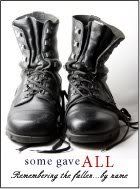Annie from My Life as Annie is wanting to get a message out.
One she learned about personally.
She almost lost her precious daughter Izzy to a drowning accident.
But the Lord decided that it was not her time.
Read Annie's story here and visit Izzy's blog here to see her amazing progress!
Water Related Injuries:
In 2003, there were 3,306 unintentional fatal drownings in the United States, averaging nine people per day. This figure does not include drownings in boating-
related incidents (CDC 2005).
For every child 14 years and younger who dies from drowning, five receive emergency department care for nonfatal submersion injuries. More than half of these children require hospitalization (CDC 2005).
Nonfatal drownings can cause brain damage that result in long-term disabilities ranging from memory problems and learning disabilities to the permanent loss of basic functioning (i.e., permanent vegetative state).
A CDC study about self-reported swimming ability (Gilchrist et al. 2000) found
Younger respondents reported greater swimming ability than older respondents;
Self-reported ability increased with level of education;
Among racial groups, African Americans reported the most limited swimming ability; and
Men of all ages, races, and educational levels consistently reported greater swimming ability than women
Groups at Risk
Males: In 2003, males accounted for 80% of fatal drownings in the United States (CDC 2005).
Children: In 2003, 782 children ages 0 to 14 years died from drowning (CDC 2005).
Although drowning rates have slowly declined (Branche 1999), drowning remains the second-leading cause of injury-related death for children ages 1 to 14 years (CDC 2005).
African Americans: Factors such as the environment (e.g., access to swimming pools) may contribute to the racial differences in drowning rates between African Americans and white Americans (Branche et al. 2004).
During 2002-2003, the overall age-adjusted fatal drowning rate for African Americans was 1.25 times higher than for whites (CDC 2005).
However, these rates vary by age. During this time, African-American infants under one year had a fatal drowning rate slightly higher than the drowning rate of white infants (CDC 2005).
Most infants drown in bathtubs, toilets, or household buckets. Among children 1 to 4 years of age, African Americans had a lower fatal drowning rate than whites. Drownings in this age group typically happen in residential swimming pools. African-American children ages 5 to 19 years fatally drowned at 2.3 times the rate of white children in this age group during 2002-2003 (CDC 2005).
As children get older, drownings often occur in open water areas such as ponds, lakes, and rivers. If African Americans participate less in water-related activities than whites, their drowning rates (per exposure) may be higher than currently reported (Branche et al. 2004).
Risk Factors
Children under age one most often drown in bathtubs, buckets, or toilets (Brenner et al. 2001).
Among children ages 1 to 4 years, most drownings occur in residential swimming pools (Brenner et al. 2001).
Most young children who drowned in pools were last seen in the home, had been out of sight less than five minutes, and were in the care of one or both parents at the time (Present 1987).
For persons with seizure disorders, drowning is the most common cause of unintentional injury death, with the bathtub as the site of highest drowning risk (Quan et al. 2006).
Alcohol use is involved in about 25% to 50% of adolescent and adult deaths associated with water recreation (Howland et al. 1995; Howland and Hingson 1988).
Alcohol influences balance, coordination, and judgment, and its effects are heightened by sun exposure and heat (Smith and Kraus 1988).
Boating carries risks for injury. In 2004, the U.S. Coast Guard received reports for 4,904 boating incidents; 3,363 participants were reported injured and 676 died in boating incidents.
Among those who drowned, 90% were not wearing life jackets. Most boating fatalities from 2004 (70%) were caused by drowning; the remainder were due to trauma, hypothermia, carbon monoxide poisoning, or other causes.
Alcohol was involved in about one-third of all reported boating fatalities. Open motor boats were involved in 42% of all reported incidents, and personal watercraft were involved in another 25% (USCG 2003).
One she learned about personally.
She almost lost her precious daughter Izzy to a drowning accident.
But the Lord decided that it was not her time.
Read Annie's story here and visit Izzy's blog here to see her amazing progress!
Water Related Injuries:
In 2003, there were 3,306 unintentional fatal drownings in the United States, averaging nine people per day. This figure does not include drownings in boating-
related incidents (CDC 2005).
For every child 14 years and younger who dies from drowning, five receive emergency department care for nonfatal submersion injuries. More than half of these children require hospitalization (CDC 2005).
Nonfatal drownings can cause brain damage that result in long-term disabilities ranging from memory problems and learning disabilities to the permanent loss of basic functioning (i.e., permanent vegetative state).
A CDC study about self-reported swimming ability (Gilchrist et al. 2000) found
Younger respondents reported greater swimming ability than older respondents;
Self-reported ability increased with level of education;
Among racial groups, African Americans reported the most limited swimming ability; and
Men of all ages, races, and educational levels consistently reported greater swimming ability than women
Groups at Risk
Males: In 2003, males accounted for 80% of fatal drownings in the United States (CDC 2005).
Children: In 2003, 782 children ages 0 to 14 years died from drowning (CDC 2005).
Although drowning rates have slowly declined (Branche 1999), drowning remains the second-leading cause of injury-related death for children ages 1 to 14 years (CDC 2005).
African Americans: Factors such as the environment (e.g., access to swimming pools) may contribute to the racial differences in drowning rates between African Americans and white Americans (Branche et al. 2004).
During 2002-2003, the overall age-adjusted fatal drowning rate for African Americans was 1.25 times higher than for whites (CDC 2005).
However, these rates vary by age. During this time, African-American infants under one year had a fatal drowning rate slightly higher than the drowning rate of white infants (CDC 2005).
Most infants drown in bathtubs, toilets, or household buckets. Among children 1 to 4 years of age, African Americans had a lower fatal drowning rate than whites. Drownings in this age group typically happen in residential swimming pools. African-American children ages 5 to 19 years fatally drowned at 2.3 times the rate of white children in this age group during 2002-2003 (CDC 2005).
As children get older, drownings often occur in open water areas such as ponds, lakes, and rivers. If African Americans participate less in water-related activities than whites, their drowning rates (per exposure) may be higher than currently reported (Branche et al. 2004).
Risk Factors
Children under age one most often drown in bathtubs, buckets, or toilets (Brenner et al. 2001).
Among children ages 1 to 4 years, most drownings occur in residential swimming pools (Brenner et al. 2001).
Most young children who drowned in pools were last seen in the home, had been out of sight less than five minutes, and were in the care of one or both parents at the time (Present 1987).
For persons with seizure disorders, drowning is the most common cause of unintentional injury death, with the bathtub as the site of highest drowning risk (Quan et al. 2006).
Alcohol use is involved in about 25% to 50% of adolescent and adult deaths associated with water recreation (Howland et al. 1995; Howland and Hingson 1988).
Alcohol influences balance, coordination, and judgment, and its effects are heightened by sun exposure and heat (Smith and Kraus 1988).
Boating carries risks for injury. In 2004, the U.S. Coast Guard received reports for 4,904 boating incidents; 3,363 participants were reported injured and 676 died in boating incidents.
Among those who drowned, 90% were not wearing life jackets. Most boating fatalities from 2004 (70%) were caused by drowning; the remainder were due to trauma, hypothermia, carbon monoxide poisoning, or other causes.
Alcohol was involved in about one-third of all reported boating fatalities. Open motor boats were involved in 42% of all reported incidents, and personal watercraft were involved in another 25% (USCG 2003).
Labels: Safety




















0 comments:
Post a Comment
<< Home